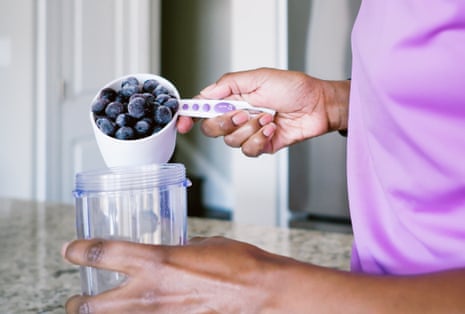Converting American recipes to metric measurements is easier than you think. You need a few simple tools and some basic knowledge.
Many people around the world use metric measurements. Yet, American recipes often use cups, tablespoons, and ounces. This can be confusing for those used to grams and liters. Knowing how to convert these measurements helps you cook recipes from any source.
It ensures accuracy and better results in your dishes. This guide will show you simple ways to convert those American measurements to metric. You can enjoy your favorite American recipes with ease and precision. Let’s dive into the easy steps you need to follow.

Credit: cotswoldflour.com
Basic Conversion Principles
Converting American recipes to metric measurements involves using specific conversion factors. For example, 1 cup equals 240 milliliters. Also, remember that 1 ounce is approximately 28 grams.
Converting American recipes to metric measurements can seem tricky. But it doesn’t have to be. Understanding basic conversion principles can make the process easier. American recipes often use cups, tablespoons, and teaspoons. Metric recipes use grams, liters, and milliliters. The first step is to know the difference between weight and volume.Weight And Volume Differences
Weight and volume are not the same. Weight measures how heavy something is. Volume measures how much space it takes up. For example, a cup of flour and a cup of milk have different weights. Flour is lighter than milk. So, you need different conversions for each ingredient.Temperature Conversion
American recipes use Fahrenheit for baking temperatures. Metric recipes use Celsius. Converting between the two is simple. To convert Fahrenheit to Celsius, subtract 32 from the Fahrenheit number. Then, multiply by 5/9. For example, 350°F becomes 176.6°C. To convert Celsius to Fahrenheit, multiply the Celsius number by 9/5. Then, add 32. For example, 180°C becomes 356°F. “`Tools For Conversion
Converting American recipes to metric measurements can be tricky. Having the right tools simplifies the process. Accurate tools ensure your cooking and baking are successful. Let’s explore some essential tools for conversion.
Digital Scales
Digital scales are precise. They measure ingredients in grams and kilograms. This eliminates the guesswork. Most digital scales have a tare function. It allows you to reset the scale to zero. This is useful when measuring multiple ingredients in one bowl. Look for a scale that is easy to clean and store.
Measuring Cups And Spoons
Measuring cups and spoons are essential. They come in both metric and imperial units. Find a set that includes milliliters (ml) for liquid ingredients. For dry ingredients, look for measuring spoons with both grams and milliliters. This dual unit feature helps with accurate measurements. Stainless steel options are durable and long-lasting. Plastic options are lightweight and easy to handle. Choose what works best for you.
Common Ingredient Conversions
Hey friends! Today, let’s talk about something super useful – converting American recipes to metric measurements. If you love cooking but find yourself stuck with recipes using cups and ounces, don’t worry. I’ve got your back. In this section, we’ll focus on common ingredient conversions. We’re going to make things simple and easy to follow. Ready? Let’s dive in.
Flour And Sugar
Baking is all about precision. Using the right amounts of flour and sugar is key. American recipes often use cups, but metric measurements use grams. Here’s a handy table to help you out.
| Ingredient | American Measurement | Metric Measurement |
|---|---|---|
| All-Purpose Flour | 1 cup | 120 grams |
| Sugar | 1 cup | 200 grams |
| Brown Sugar | 1 cup | 220 grams |
Easy, right? Just remember these conversions, and you’re good to go. Flour is lighter than sugar, so they weigh differently. A cup of flour is about 120 grams, while a cup of sugar is around 200 grams. Keep this in mind, and your baking will be spot on.
Liquids
Converting liquid measurements is a bit different. Instead of grams, we use milliliters (ml). Here’s a quick guide.
| Liquid | American Measurement | Metric Measurement |
|---|---|---|
| Water | 1 cup | 240 ml |
| Milk | 1 cup | 240 ml |
| Oil | 1 cup | 240 ml |
See? It’s pretty simple. One cup of any liquid is about 240 ml. Whether it’s water, milk, or oil, this rule applies. So next time you’re following an American recipe, you’ll know exactly how much liquid you need.
Converting American recipes to metric doesn’t have to be tricky. With these common ingredient conversions, you’re set to cook and bake like a pro. Happy cooking!
Converting Cooking Temperatures
Hey friends, cooking is fun, but it can get a bit tricky when you need to convert American recipes to metric measurements. One of the biggest challenges? Converting cooking temperatures. But don’t worry, I’ve got you covered. Let’s dive into how to make those conversions super easy!
Oven Temperature
Oven temperatures are often given in Fahrenheit in American recipes. But most of the world uses Celsius. Here’s a simple trick to convert between the two:
To convert Fahrenheit to Celsius, use this formula:
- Subtract 32 from the Fahrenheit temperature.
- Multiply the result by 5.
- Divide by 9.
For example, if a recipe calls for 350°F, you would do the following:
- 350 – 32 = 318
- 318 5 = 1590
- 1590 / 9 = 176.67
So, 350°F is about 177°C. Easy, right?
Here’s a quick reference table for common oven temperatures:
| Fahrenheit (°F) | Celsius (°C) |
|---|---|
| 300 | 150 |
| 350 | 177 |
| 400 | 200 |
| 450 | 232 |
Stovetop Cooking
Stovetop cooking is a bit different. You usually deal with terms like “medium heat” or “high heat.” These terms can be a bit vague. But, here’s a rough guide to help you out:
- Low Heat: About 100°C (212°F)
- Medium Heat: About 150°C (302°F)
- High Heat: About 200°C (392°F)
Remember, these are just estimates. Always keep an eye on your food. It’s the best way to ensure it cooks perfectly.
When I first started converting recipes, I always had a calculator nearby. Now, it’s almost second nature. Practice makes perfect!
So, next time you’re cooking a delicious American recipe, don’t stress about the temperatures. Use these tips and you’ll be a pro in no time!
Adjusting For Altitude
Converting American recipes to metric measurements simplifies cooking for non-American cooks. Use online conversion tools for accurate results. Remember to adjust baking times and temperatures accordingly.
Cooking at high altitudes can be tricky. High altitudes affect both baking and boiling. This is because the air pressure is lower. Recipes may need adjustments. Here’s how to adapt your American recipes for high altitudes.Baking Adjustments
Baking at high altitudes can be challenging. Cakes and breads may rise too quickly. Then, they may collapse. To prevent this, adjust your ingredients. Use less baking powder or baking soda. Increase the oven temperature by 15 to 25 degrees Fahrenheit. Add a bit more flour to the mix. This will help your baked goods rise properly. Also, reduce sugar slightly. This prevents over-rising.Boiling Points
Water boils at a lower temperature at high altitudes. This affects cooking times. Boil water longer for pasta and vegetables. Make sure to test for doneness. You may need to cook meat longer, too. Use a thermometer to check internal temperatures. This ensures food is cooked safely. Knowing these small adjustments helps in cooking at high altitudes. “`
Credit: www.theguardian.com
Practical Tips
Converting American recipes to metric measurements can seem confusing. But with some practical tips, it becomes easier. These tips help you cook with precision and confidence.
Using Conversion Charts
Conversion charts are your best friend in the kitchen. They provide accurate measurements for different ingredients. You can find these charts online or in cookbooks. Print a chart and keep it handy while cooking. It saves time and ensures you use the right amounts.
For example, one cup of flour equals about 120 grams. One tablespoon of sugar is around 15 grams. Use these charts to convert all your ingredients. It helps you avoid mistakes and create delicious dishes.
Double-checking Measurements
Always double-check your measurements. Even small errors can affect your recipe. Use a digital scale for more precise measurements. Weigh your ingredients to match the metric system accurately.
Re-read your recipe and your converted measurements. Compare them with reliable sources. It ensures your conversion is correct. This extra step helps you avoid cooking mishaps.
:max_bytes(150000):strip_icc()/IMG_6471fc-58b5d6105f9b586046db5bc8.jpg)
Credit: www.thespruceeats.com
Frequently Asked Questions
How To Convert Us Recipes To Metric?
Use a kitchen scale for accurate measurements. Convert cups to milliliters, ounces to grams, and Fahrenheit to Celsius. Use conversion charts or apps for help.
How Do You Convert Standard Measurements To Metric?
To convert standard measurements to metric, use conversion factors: 1 inch equals 2. 54 centimeters, 1 pound equals 0. 45 kilograms, and 1 mile equals 1. 61 kilometers. Use online converters for quick results.
What Is The Metric Equivalent Of American Cups?
One American cup equals 240 milliliters (ml) in metric measurement. This standard applies to both liquid and dry ingredients.
How To Convert Metric Units In Cooking?
Use online conversion tools or charts to convert metric units in cooking. Measure ingredients accurately using a kitchen scale.
Conclusion
Converting American recipes to metric measurements is simple. Use a reliable conversion tool. Double-check measurements for accuracy. Practice makes the process easier over time. Cooking with metric measurements can improve consistency. Enjoy exploring new recipes with confidence. Don’t let different units hold you back.
Happy cooking!

Rakib Sarwar is a seasoned professional blogger, writer, and digital marketer with over 12 years of experience in freelance writing and niche website development on Upwork. In addition to his expertise in content creation and online marketing, Rakib is a registered pharmacist. Currently, he works in the IT Division of Sonali Bank PLC, where he combines his diverse skill set to excel in his career.
